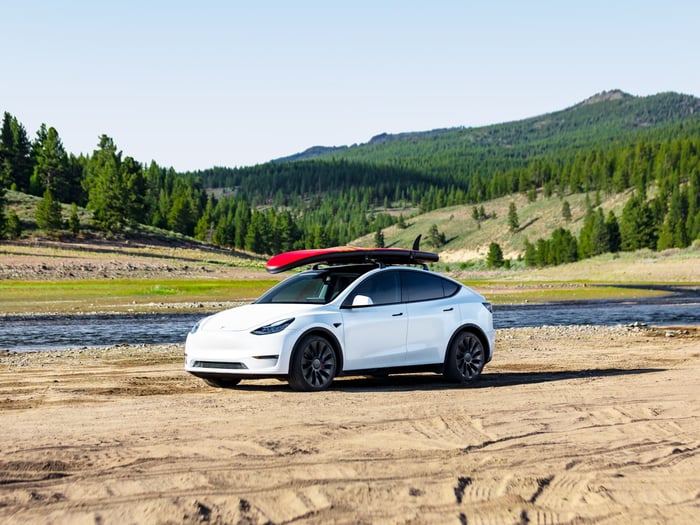Tesla (TSLA -2.02%) stock is down 6% in after-hours trading on Wednesday as of 7:39 p.m. ET, following the electric vehicle pioneer’s release of its first-quarter 2023 results.
The stock’s drop is probably largely attributable to investors being concerned about the downward pressure on profits stemming from the company’s ongoing price cuts. Tesla began lowering prices on its cars across regions late last year and continued its aggressive price cutting into the first quarter. These price cuts are intended to increase demand during a period that’s challenging for automakers because of high interest rates and consumer concerns about a possible recession.
Longer-term, Tesla’s choosing to drive auto sales volumes by lowering prices should prove to be the right move, in my view. The company has the opportunity to make money on its vehicles after the initial sale through autonomy, supercharging, connectivity, and service.
The following is an overview of Tesla’s first quarter centered on seven key metrics.
1. Revenue jumped 24%
Quarterly revenue grew 24% year over year to $23.33 billion. This result was in line with the $23.21 billion Wall Street consensus estimate.
Revenue growth was driven by increased vehicle deliveries and growth in other parts of the business, offset by lower vehicle average selling price and currency headwinds.
Segment year-over-year revenue performance was as follows:
Automotive segment revenue grew 18% to $19.96 billion.Energy generation and storage revenue soared 148% to $1.53 billion. Growth was driven by a 360% increase in energy storage capacity deployments to a record 3.89 gigawatt hours (GWh) and a 40% increase in solar power deployments to 67 megawatts (MW).Services and other revenue rose 44% to a record $1.84 billion. Growth was driven by used car and part sales, along with an increase in paid use of Superchargers.
2. Vehicle production and deliveries grew 44% and 36%, respectively
In Q1, Tesla produced 440,808 vehicles (more than 19,000 Model S and X units and more than 421,000 Model 3 and Y units), up 44% from the year-ago period.
And it delivered 422,875 vehicles (almost 11,000 Model S/X and more than 412,000 Model 3/Y), up 36% year over year.
3. Auto segment gross margin was 21.1%
In Q1, the automotive segment’s gross margin (gross profit divided by revenue) based on generally accepted accounting principles (GAAP) was 21.1%. Compared with other automakers, this is still a strong auto gross margin. That said, it was down significantly from 32.9% in the year-ago period. It was also down sequentially, as this metric was 25.9% in the fourth quarter of 2022. These drops are due to the company’s ongoing price cuts.
4. Operating income dropped 26%
The quarter’s operating income declined 26% year over year to $2.7 billion. Operating margin (operating income divided by revenue) landed at 11.4%, down from 19.2% in the year-ago period.
5. Adjusted EPS fell 21%
In Q1, GAAP net income was $2.5 billion, or $0.73 per share, down 23% from the year-ago period. Adjusted for one-time items, net income came in at $2.9 billion, or $0.85 per share, down 21% year over year. This result was in line with the $0.85 adjusted earnings per share (EPS) that analysts had expected.
6. Operating cash flow declined by 37%
The quarter’s cash generated from operations fell 37% year over year to $2.5 billion. Free cash flow dropped 80% to $441 million.
Tesla ended the quarter with $22.4 billion in cash, cash equivalents, and short-term investments, up 24% from the year-ago quarter and up 1% from the prior quarter.
7. Supercharger stations increased by 33%
Tesla continued its solid pace of building out its network of Supercharger stations. It ended the quarter with 4,947 stations, up 33% from the year-ago period. Supercharger connectors grew 34% year over year to 45,169.
A quarter with no big surprises
In short, Tesla turned in a quarter that was in line with expectations. While the auto gross margin was probably a little weaker than many investors were expecting, there were no big surprises in key metrics.
Reiterating what I wrote in the opening, longer-term, Tesla’s choosing to drive auto sales volumes by lowering prices should prove to be the right move. The company can afford this strategy, as its auto gross margin remains robust relative to industry averages.
